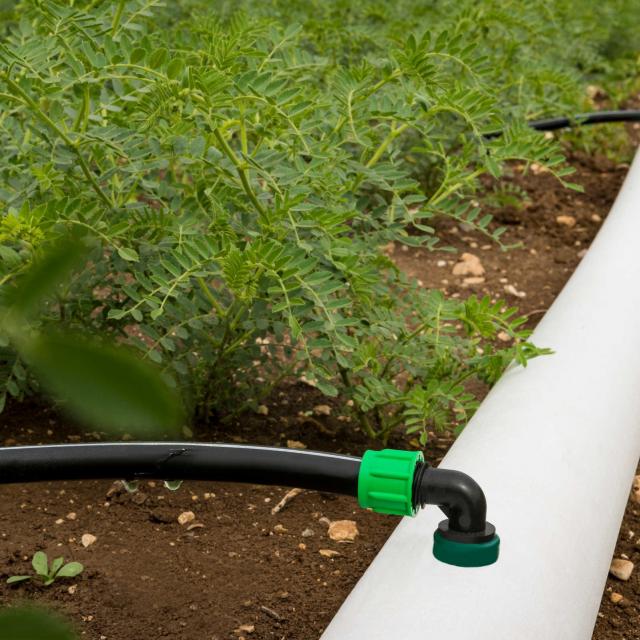All around the world, growers use layflat as submains for seasonal horticulture. Typically, layflat is a PVC hose, with the take-offs manually cut and inserted into it by farm laborers.

The challenge with PVC layflat is that it was never originally designed to be a submain with holes cut into it. Overtime, the outlet holes stretch and cause leakage in the field. At this point, the layflat usually needs to be replaced.
“We developed the H6000 in order to provide solutions to common problems which growers have with PVC layflat,” remarks Tomer Katzir, Head of Research & Development at Rivulis. “It [PVC Layflat] is heavy, not recyclable, and there are durability issues with the outlets”.
The engineering team at Rivulis developed H6000 PE (polyethylene) to resolve the limitations of PVC layflat. Key to H6000 PE is a special manufacturing process which molds outlets directly onto the hose during production. These ½” female threaded molded outlets are installed at the specific distance to match the grower’s requirements. In the field, the grower simply screws the required take-off to the outlet. The Rivulis take-offs designed specifically for H6000 PE will work with both drip tape and line hose (16 and 22 mm). As the outlet is molded onto the hose itself, there is no hole to stretch overtime. The result is leak free operation, season after season.
Both the hose and the outlets of H6000 PE are manufactured from polyethylene. An obvious benefit of using PE is that it is fully recyclable as well as much lighter than PVC. In general, it about a third of the weight of PVC, and therefore requires just one person to carry the roll.